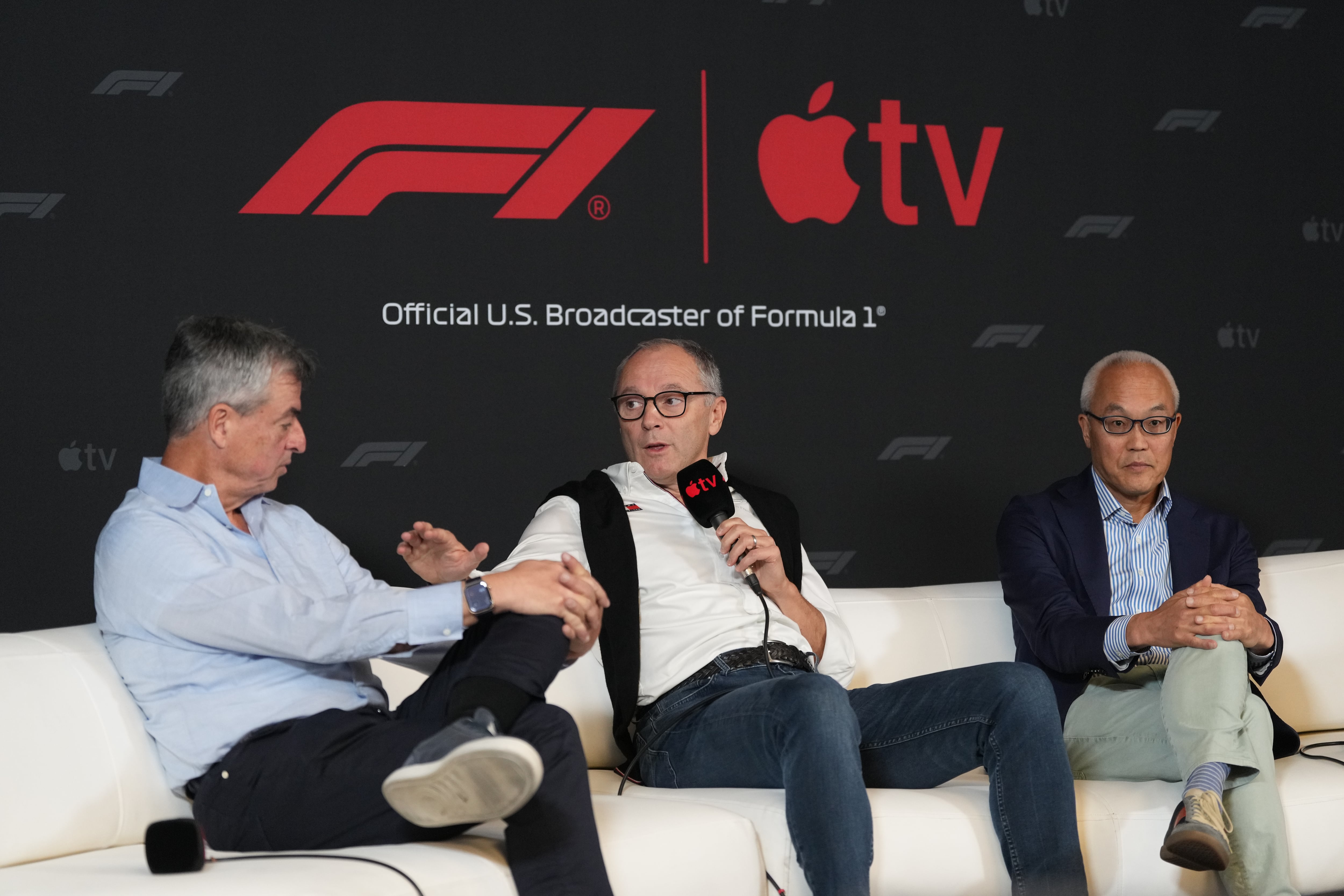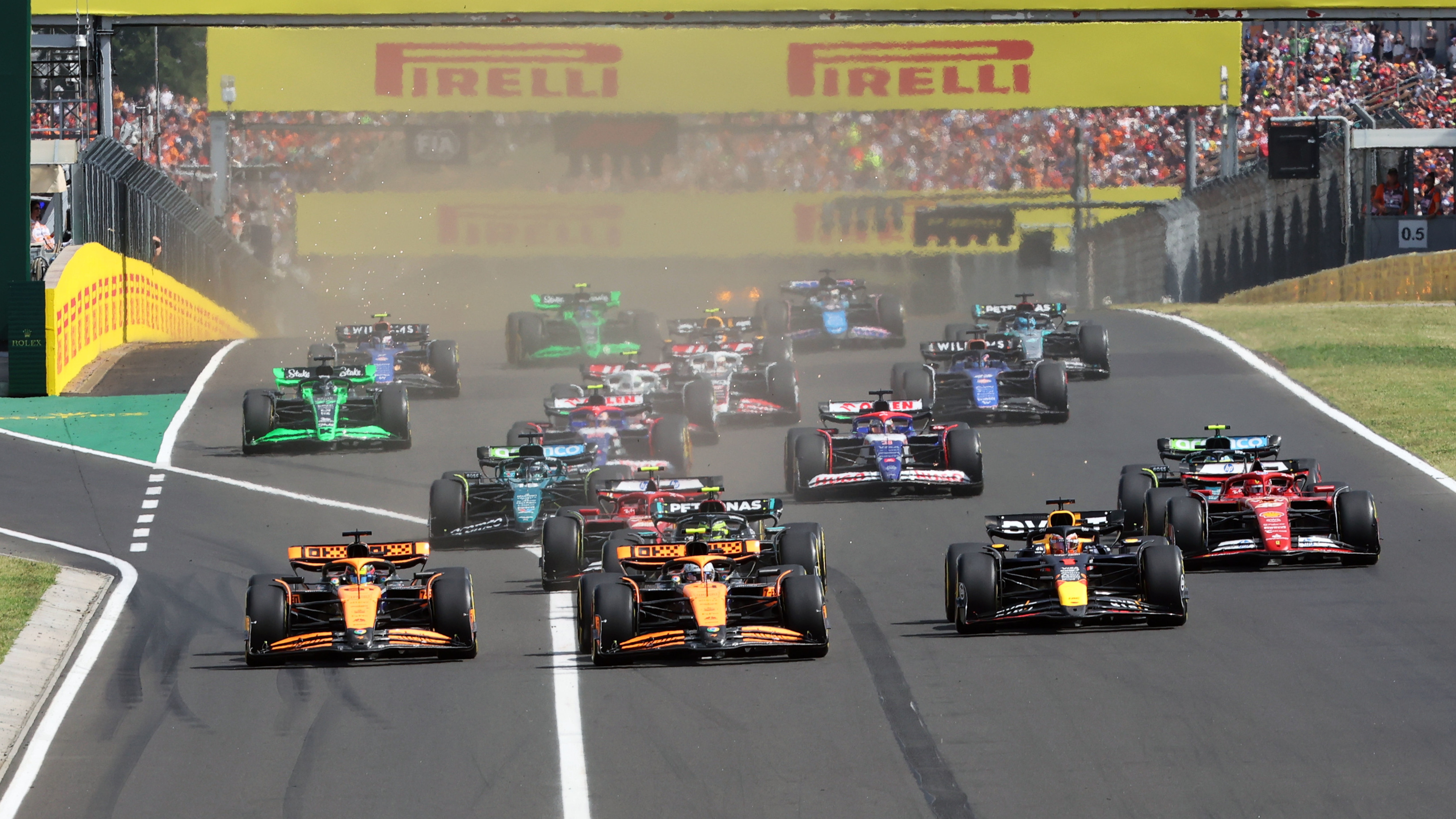The world of Formula 1 is bracing for a seismic shift, an earthquake that measures not on the Richter scale, but in billions of dollars and digital reach. In a move that signals the end of an era for traditional sports broadcasting, Apple has secured the exclusive rights to Formula 1 in the United States, inking a staggering $750 million multi-year deal.
But make no mistake, this is not just a simple changing of the guard, swapping one logo for another on your screen. This is a fundamental, ground-up reimagining of how a global sport is consumed, and it’s a move that F1’s own CEO, Stefano Domenicali, calls a “big step change” in the sport’s media landscape.
The price tag alone is enough to snap necks. At a reported $750 million for the contract, Apple is paying roughly double what the previous broadcaster, ESPN, had on the table. It’s a figure that prompted Domenicali to admit, with what one can only imagine was a wide grin, that “financially, we are very happy about this.” And why wouldn’t they be?
The deal’s value is underscored by the runaway success of the Apple-produced F1 movie, which has already grossed nearly $650 million, well on its way to becoming the most successful sports film in history. Clearly, Apple sees F1 as a golden goose, and it’s willing to pay a premium.

But the real story isn’t the money. It’s the strategy. This deal is far more than a broadcast acquisition; it’s a deep, technological, and cultural partnership. F1’s explosive growth in the American market, fueled in no small part by ESPN’s coverage and the Netflix phenomenon Drive to Survive, had hit a ceiling. While audiences regularly topped one million viewers, the fanbase was fragmented, scattered across various cable packages and streaming services. Finding a race wasn’t always easy, a significant problem in the modern, on-demand world.
This is where Apple’s true power comes into play. The company isn’t just a streaming service; it’s a global ecosystem. We’re talking about an estimated 1.5 billion iPhone users worldwide, with nearly 300 million in the USA alone. Add to that Apple TV’s 45 million subscribers, the majority of whom are stateside, and you have a platform for reach that traditional television could only dream of.
This partnership aims to embed Formula 1 into the very fabric of Apple’s universe, making it inescapable for users and endlessly engaging for fans. The opportunities are, as Apple’s Senior Vice President of Services Eddie Cue puts it, “exponentially huge.” This isn’t just about tuning in on race day. Imagine unlocking your iPhone to a lock screen widget from Apple Sport, showing you live leaderboards or updates on your favorite driver. Picture opening Apple News and finding a deep dive on the latest driver market gossip, or using Apple Maps to take a stunning augmented reality flyover of the virtual track in Las Vegas or Monaco.
The integration plans are as ambitious as they are vast. Apple is exploring F1-themed playlists and podcasts on Apple Music, and even syncing workouts on Apple Fitness+ to the tension and timing of a qualifying lap. This is a 360-degree immersion, transforming F1 from a weekend event into a daily, interactive experience.
Of course, the core product remains the race broadcast itself. For those worried about a jarring change, Apple is playing it smart. When the deal kicks in, the company will initially take the regular international feed, utilizing the familiar F1 TV roster of commentators and pundits. Expect to hear the voices of Alex Jakes, Jolian Palmer, and Alex Brundle, along with experts like James Hinchcliffe and Ruth Buscombe. A Spanish-language feed will also be available from day one.

But this is just the warm-up lap. The Race understands that Apple is keen to “experiment” with its own commentary teams after the first year and potentially build its own bespoke production down the line. This is where Apple’s DNA for innovation will truly shine. The company, which pushed boundaries with new camera technology during the filming of its F1 movie, wants to bring that cinematic quality to the live broadcast.
This could mean the introduction of new pan-tilt-zoom cameras for more dynamic action, or the deployment of the smallest movable 6K cameras to take viewers deep inside the cockpit for angles we’ve never seen before. Apple even engineered a custom camera module using parts from an iPhone 15 Pro, offering color grading and visual possibilities far beyond current broadcast standards.
Perhaps most futuristic is the prospect of live haptics. Imagine watching a race on your iPhone and feeling the vibrations of the engine revs or the jolt of a car riding a curb, delivered in real-time through your device. Apple has already used this for an F1 movie trailer, and bringing it to live races would add a tactile, fourth dimension to the viewing experience. As F1’s chief of media rights, Ian Holmes, says, this deal is as much “about experimenting with new types of technology as it is content.”
So, what will this revolution cost the average fan? Here, Apple is diverging from the standard, hard-paywall model. F1 coverage—including all practices, qualifying sessions, sprints, and races—will be included as part of the standard Apple TV subscription, with no extra cost. But in a brilliant marketing move, Apple will also make all practice sessions and a selection of four or five races per season completely free to watch on the Apple TV app, even for non-subscribers. This “freemium” model is a Trojan horse, designed to draw in millions of new, curious viewers and convert them into paying subscribers.
For dedicated fans, the beloved F1 TV platform isn’t disappearing. In fact, it’s being woven into the core offer. In the US, F1 TV will be made available for free to all Apple TV subscribers. For those currently paying for F1 TV’s premium service, this is a significant value-add. However, it’s a potential price hike for those who only subscribed to the cheaper, now-discontinued F1 TV Pro service, as they will now need a full Apple TV subscription.
For now, this revolution is contained within the borders of the United States. F1’s other major markets are locked into long-term deals, most notably Sky’s exclusive contract in the UK, which runs for several more years.

But look closer at the calendar. Apple’s US deal conveniently expires at the end of its term. This timing is no coincidence. It aligns perfectly with when Sky’s UK deal and other major European contracts (like Sky Germany and Italy, which end in the coming years) will be up for renewal.
While neither party has officially declared it, the writing is on the wall. This $750 million US deal is not the endgame; it’s the blueprint. It’s a multi-year test case to perfect the technology, integrate the ecosystem, and prove the model. If Apple can dramatically boost subscriber numbers and fan engagement in the US, the next stop is undoubtedly the world.
Eddie Cue has stated he wants F1 to be a “forever deal” for Apple, and Stefano Domenicali has openly talked about the need for F1 to “think big” in a “global world.” This partnership is the first, decisive battle in a campaign for a total global takeover of F1’s broadcast future. The lights are out, and the race for dominance has begun.